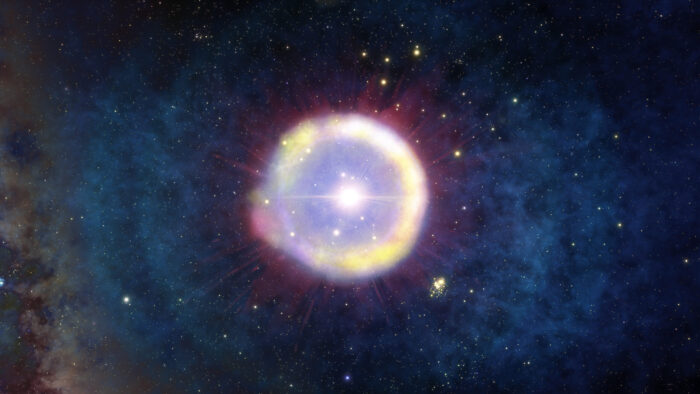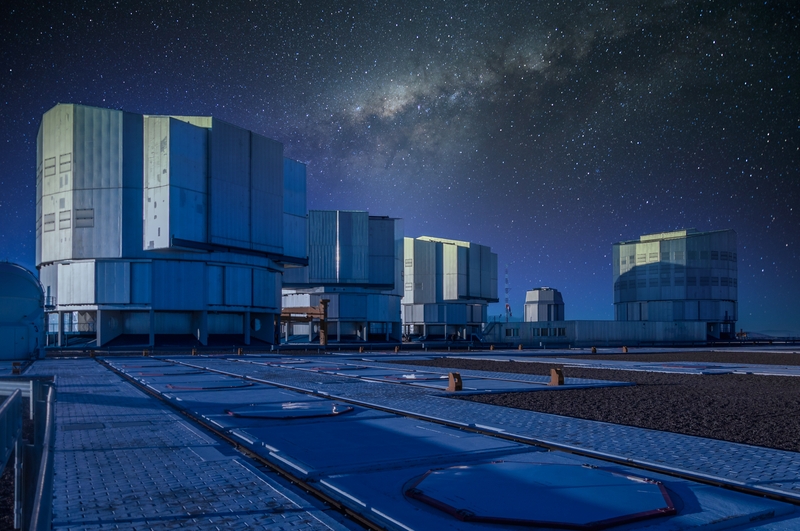May 6 to 21 is Science Odyssey, a celebration of all things science! OWLconnected is recognizing this two-week event with lots of science content, as well as with an amazing contest, presented by our friends at the Natural Sciences and Engineering Research Council of Canada (NSERC). Details are at the end of this post—be sure to enter!
One of the coolest things about looking into deep space with powerful telescopes is that we get to look back in time.
Because while light is fast—the fastest thing in the universe!—even it needs some time to get places. For example, the light from the Sun takes a little over eight minutes to reach Earth, meaning that we are seeing it as it was eight minutes in the past.
(Not that you should ever look directly at the Sun ... you get the idea!)
And if you stretch this concept out over exceptionally long distances, it is possible to see thousands, millions, even billions of years into the universe's past. All you need is to have a powerful enough telescope.
One of these telescopes is the well-named Very Large Telescope in northern Chile. Run by the European Space Agency (ESA), it uses the combined power of four huge optical telescopes to peer deep into space. And using it, astronomers recently made an incredible discovery.
They observed the remains of some of the first stars in the universe!
These three huge clouds of stellar gas are full of carbon, oxygen, magnesium, silicon, and iron. They contain the type of 'signature' that experts believe would've been found after the earliest stars went Ka-BOOM in a huge supernova, some 12 billion years ago.
It's a really mind-boggling thought. Maybe too mind-boggling. What does it mean? How does this fit into our picture of the universe?
The seeds of the universe

An artist's illustration of what a Population III star might have looked like. (Wikimedia Commons)
The beginning of the universe as we know it happened with an enormous explosion of energy known as the Big Bang. Scientists believe this occurred about 13.8 billion years ago. (By contrast, the Sun and our solar system is about 4.6 billion years old.)
And according to current theories, a few hundred million years later (13.7 to 13.5 billion years ago), the first stars appeared. These first stars are known as Population III stars, and scientists believe that they would've been very different to stars today.
They would've been enormous—a hundred times the size of the Sun—meaning that they burned out relatively quickly. And they would've only been made of hydrogen and helium, because those were pretty much the only elements in the universe at the time. These were early days!
However, inside these stars, enormous pressure would've made lots of 'heavier' elements, like carbon, oxygen, silicon, and iron. And when a Population III star died in a supernova explosion, those elements would've been spread across the universe.
In other words, these stars are what gave us the elements that were essential for the formation of rocky planets, complex atmospheres, and ultimately, life!
Where are you?
It's a fascinating theory, right? Massive stars from billions of years ago literally making the stuff that we're all made of for the first time, then exploding to send it all across the universe!
Except, where are these stars?
That's the problem. These events happened so long along that it is very difficult to observe them directly. The James Webb Space Telescope, which is the most powerful telescope operating, can see over 13 billion light-years away. In January, researchers believed that they may have glimpsed a Population III star for the first time, but this finding needs to be confirmed.
Until then, these clouds of stellar gas are an important discovery. They prove that we're getting closer to observing some of the earliest events in our universe's history.
Go astronomy!
Contest alert
Don't forget to enter the Science Odyssey Contest! CLICK HERE TO ENTER.

 The Very Large Telescope, located in the Atacama Desert in Chile, was used to observe this gas. (ID 174119587 © Christian Offenberg | Dreamstime.com)
The Very Large Telescope, located in the Atacama Desert in Chile, was used to observe this gas. (ID 174119587 © Christian Offenberg | Dreamstime.com)










cool 😉